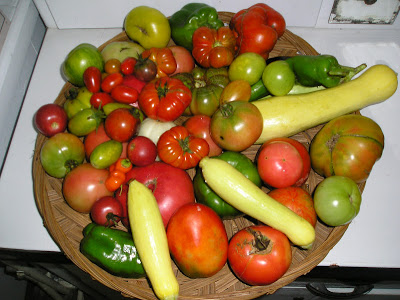
Is your idea of winter landscaping to put the holiday decorations out in December and then to take them down in January? Does looking out your windows after the holidays give you the blahs? Many gardeners neglect thinking about winter interest simply because their perception of the garden in winter is that it is dead. This notion is far from the truth; in fact, your garden in the winter is merely sleeping…or as I like to think of it, giving me a rest.
Your landscape should bring enjoyment year round and now is the perfect time to take inventory of your winter landscaping to be sure you have some winter interest in your garden for years to come. That beautiful winter landscape is not as complicated as you may think. You are really looking at just a few things to make your winter landscape as attractive in the snow as it is in the summer.
 |
| Betula nigra seen from my kitchen window |
Focus on bark and structure. In spring, summer, and fall we are drawn to ornamental trees and shrubs with flowers and leaf color to complement our landscaping.
Deciduous trees and shrubs lose their foliage in wintertime leaving nothing but bare branches and trunks; but that can be a good thing. Many ornamental trees and shrubs have very interesting structure and/or bark--these traits are often overlooked when making a selection. Why? Well spring is the time when most of us visit nurseries and winter is the furthest thing from our minds. Yet it is the interesting structure and bark that will add to your winter landscaping. It is a rare tree or shrub that possesses every trait, but an interesting year-round landscape will contain a good mixture of these trees and shrubs. Choices are endless, but some good examples are:
Don't forget the berries. Berries are winter’s jewelry. Many trees, shrubs, and ground covers have berries they hold onto during fall and winter. These berries can also provide food for colorful birds overwintering. A few great shrubs with wintering berries are:
- Viburnum trilobum, American cranberry bush
- Aronia arbutifolia, chokeberries
- Ilex verticillata, winterberry
- Malus selections, crabapples
- Cornus canadensis, bunchberry
- Arrowwood (Viburnum dentatum)
- Nandina domestica, heavenly bamboo
- Mitchella repens, partridge berry
Remember the evergreens. Evergreen trees and shrubs are an important component of any planting plan because they provide structure and weight to your landscape all year long, especially in the winter when your beds would otherwise be empty or “just sticks.” Often overlooked in the summer, evergreen trees and shrubs actually deliver a nice splash of color during the winter when we primarily see a landscape of browns and grays. Evergreens are not just green; they're available in yellows, blues, and all colors in between…choices are endless but may include:
- Pinus strobus 'Pendula'
- Picea pungens 'Montgomery'
- Juniperus squamata 'Blue Star'
- Picea pungens f. glauca
- Chamaecyparis obtusa
Add some hardscape. Winter is a good time to assess your landscape, figuring out where it's missing focal points. The solution to enhancing your winter landscaping might not be a plant at all. A trellis, fence, bench, an arbor, or even a garden sculpture are easy hardscapes that can really add interest.
Yes, there are four-season perennials. Some perennials have evergreen foliage--autumn fern,
lavender,
hellebore,
snowdrops,
rattlesnake plantain, even dianthus with its beautiful low-creeping foliage--making them great for winter landscaping. In the summer, ornamental grasses add sweeping background to your other plants in your garden. In the winter, these same grasses can take center stage. Their cream colored stalks and frothy seed heads will remind an onlooker of fountains rising up into the air of the winter interest garden.
I love hydrangeas in the winter landscape. While some people choose to cut back a dormant hydrangea, I keep most of mine intact, flowers and all. The faded flowers of a hydrangea look like oversize snowflakes, especially when covered with a sparkling frost.
 |
| Winter planter |
Dress up your summertime containers. Hanging pots, hardy containers, and window boxes can be adorned with winter sprigs and twigs or any other interesting plant material you may find. Adding a colorful birdhouse can brighten any planter.
Winter may not be the most colorful time of year, but embrace it for the beauty it does have to offer you. Strategic use of a few pieces of hardscape and plants that provide a burst of color or interesting texture can make your landscape really pop and stand out from the rest. A few splashes of interest can be a reminder that spring is just around the corner, and that may be just what you need to help you endure winter.






